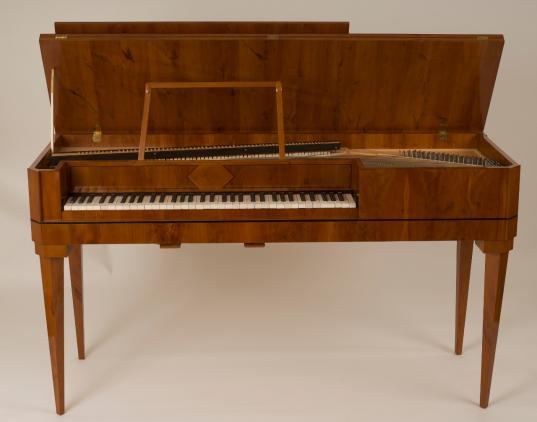Square Piano by Kaspar Katholnig,
Vienna c1810

Grand pianos from the workshop of Kaspar Katholnig are among the most frequently preserved pianos from the era of the Viennese Classic. Almost as numerous as his instruments are the variations of his first and last names, whether with K- or C- at the beginning, or -g, -gg, -k, or -ck at the end. In a certain way, such instruments are the true media of private music-making in the era of Haydn, Beethoven, or Schubert. The demand for such instruments was so great that workshops like Katholnig's likely produced them in large numbers almost exclusively. Notably, there is a fortepiano by Katholnig that Johann Nepomuk Hummel used during his time as Haydn's successor in the position of Kapellmeister for the Esterházy princes.
The considerable output of such square pianos led to a greater degree of typification and standardization than that seen with fortepianos of the time. Therefore, the variance among square pianos of that era is less than that found among grand pianos; however, they align much more closely than the fortepianos, which were intended for public or semi-public spaces, with the realistic playing conditions for the immense amount of piano literature that was created for private enjoyment.
After 1800, the importance of square pianos for private and domestic music-making rose even further. Many composers, like Franz Schubert, who were not exactly living in comfort, composed and performed at home on such square pianos. In that sense, the seemingly reduced technical and tonal potentials of a square piano were entirely reflective of the realities of life at that time.
Two original square pianos by Kaspar Katholnig are located at the Greifenberger Institute, one of which is in completely unrestored condition. This instrument was documented and served as the basis for the illustrated evidence-based reconstruction. The yew wood for the veneer corresponding to the prototype comes from a deforested castle avenue in the Loire Valley. It was built by Helmut Balk and Markus Thiel.
The unrestored original remains available for further research.
AI translated 07-2025



